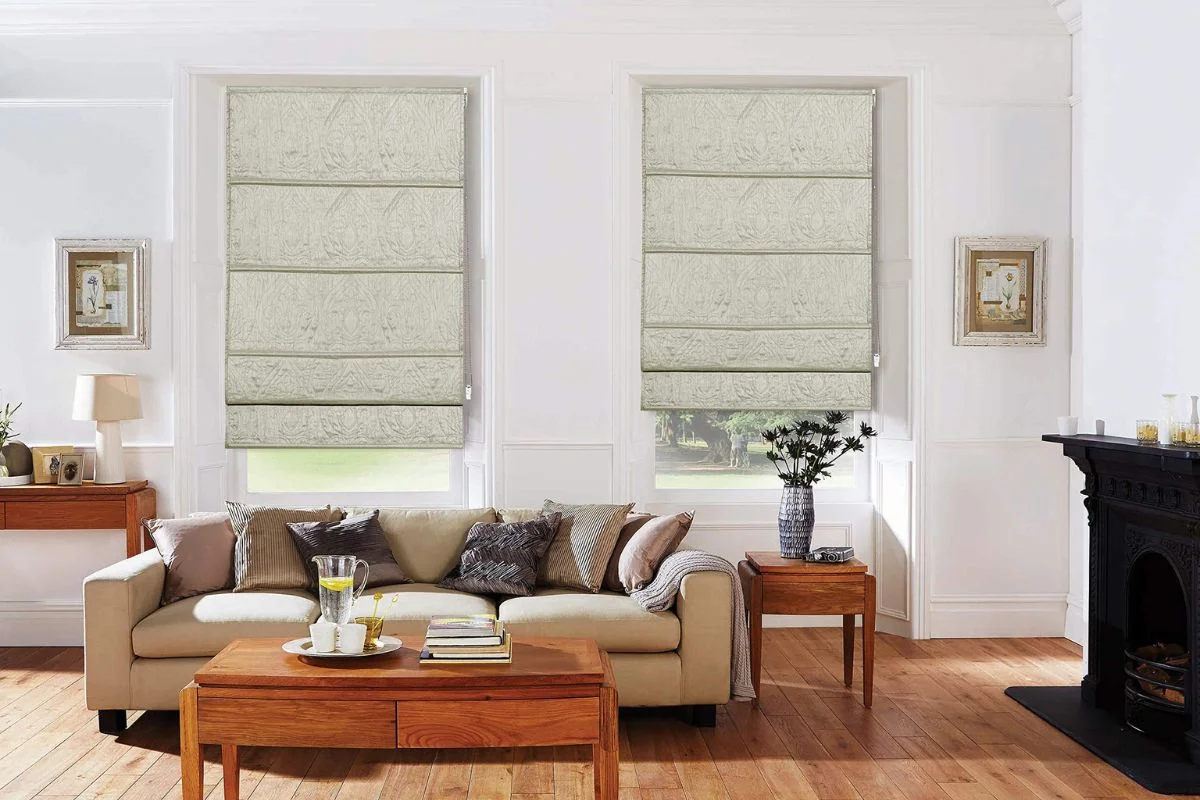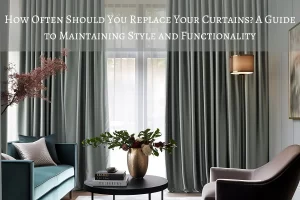
Roman curtains have been a staple of window treatments for centuries, admired for their timeless elegance and versatility. As we embrace modern design trends, Roman curtains continue to evolve, offering fresh interpretations and innovative styles to suit contemporary homes. In this article, we will explore the latest trends in Roman curtain design, from popular fabrics and patterns to trending styles and customization options. Whether you’re drawn to classic sophistication or modern minimalism, there’s a Roman curtain trend to suit every aesthetic preference and interior decor theme. Join us as we delve into the world of Roman curtain design and discover the latest trends that are shaping the way we dress our windows with style and sophistication.
Brief History: Origins and Evolution of Roman Curtain Design
Roman curtains, also known as Roman shades, have a rich history that dates back to ancient Rome. The concept of Roman curtains can be traced to the ingenious use of fabric to control light and privacy in Roman households.
Ancient Origins:
Roman citizens used large pieces of fabric or cloth to cover openings in their homes, providing protection from the elements and privacy from prying eyes. These early iterations of Roman curtains were simple yet effective, serving a practical purpose in Roman daily life.
Innovation and Development:
Over time, Roman curtain design evolved to incorporate more sophisticated mechanisms for raising and lowering the fabric. The introduction of pulley systems and cords allowed Roman curtains to be adjusted to different heights, providing greater control over light and ventilation.
Renaissance Influence:
During the Renaissance period, Roman curtains experienced a resurgence in popularity as artists and designers drew inspiration from classical Roman architecture and design. Elaborate patterns, rich fabrics, and intricate detailing became hallmarks of Renaissance-era Roman curtains, adding a touch of opulence to European interiors.
Modern Adaptations:
In the modern era, Roman curtains have continued to evolve to meet the changing needs and preferences of homeowners. Advances in technology have led to the development of motorized Roman shades, allowing for convenient operation at the touch of a button. Additionally, contemporary Roman curtain designs offer a wide range of fabrics, styles, and customization options to suit any decor aesthetic.
Timeless Appeal:
Despite centuries of evolution, the fundamental concept of Roman curtains remains unchanged: a stylish and functional window treatment that adds beauty and elegance to any space. Today, Roman curtains are cherished for their timeless appeal and versatility, making them a popular choice for homeowners seeking to enhance the beauty and comfort of their homes.
Advantages and Disadvantages of Roman Curtains
Roman curtains, also known as Roman shades, offer a range of benefits and drawbacks that should be considered when choosing window treatments for your home. Let’s explore the advantages and disadvantages of Roman curtains:
Advantages:
Elegant Appearance: Roman curtains add a touch of sophistication and elegance to any room with their clean lines and tailored look. They can instantly elevate the aesthetic appeal of a space, enhancing its overall decor.
Versatility: Roman curtains come in various styles, fabrics, and designs, making them versatile window treatments that can complement a wide range of decor themes and architectural styles.
Light Control: Roman curtains offer excellent light control, allowing you to adjust the amount of natural light entering a room by raising or lowering the shades to your desired height.
Privacy: When fully lowered, Roman curtains provide privacy by blocking the view from outside while still allowing diffused light to filter into the room.
Space-Saving: Unlike traditional curtains that require additional space for stacking when open, Roman curtains fold neatly when raised, making them ideal for rooms with limited space or small windows.
Insulation: Depending on the fabric used, Roman curtains can provide insulation against heat loss in winter and heat gain in summer, helping to improve energy efficiency and reduce heating and cooling costs.
Disadvantages:
Limited Visibility: When fully lowered, Roman curtains obstruct the view from outside, which may be a drawback if you enjoy unobstructed views of the outdoors.
Maintenance: Roman curtains require regular cleaning and maintenance to keep them looking fresh and free from dust and debris. Depending on the fabric, some Roman curtains may be more challenging to clean than others.
Complexity of Operation: Compared to traditional curtains or blinds, Roman curtains can be more complex to operate, especially if they are manually operated with cords or pulleys. Motorized options are available but may be more expensive.
Cost: Roman curtains can be more expensive than other types of window treatments, particularly if custom-made or made from high-quality fabrics. However, there are also more budget-friendly options available.
Potential for Wear and Tear: The folding mechanism of Roman curtains may lead to wear and tear over time, particularly if the shades are raised and lowered frequently. Proper care and maintenance can help prolong the lifespan of Roman curtains.
Types of Roman Curtain Styles
Roman curtains, also known as Roman shades, come in various styles, each offering a unique aesthetic and functionality. Here are the most common types of Roman curtain styles:
Flat Roman Curtains:
Flat Roman curtains feature a smooth, flat appearance when fully lowered. The fabric hangs evenly from the top of the window to create a clean and streamlined look. This style is ideal for modern and minimalist interiors.
Relaxed Roman Curtains:
Relaxed Roman curtains have a gentle curve or swoop along the bottom edge when fully lowered, creating a relaxed and casual appearance. The soft folds add a touch of elegance and charm to any room, making them suitable for traditional and transitional decor styles.
Cascade Roman Curtains:
Cascade Roman curtains, also known as waterfall Roman curtains, feature cascading folds of fabric that create a luxurious and dramatic effect when fully lowered. The cascading folds add depth and texture to the window treatment, making it a statement piece in any room.
Hobbled Roman Curtains:
Hobbled Roman curtains, also known as teardrop Roman curtains, feature overlapping folds of fabric that create a series of soft, horizontal pleats when fully lowered. This style adds volume and dimension to the window treatment, making it an eye-catching focal point in traditional and formal interiors.
Balloon Roman Curtains:
Balloon Roman curtains feature billowy, gathered fabric that creates a balloon-like effect when fully lowered. This whimsical and romantic style adds a touch of vintage charm to any room, making it ideal for shabby chic or cottage-style decor.
London Roman Curtains:
London Roman curtains, also known as London shades, feature a series of evenly spaced horizontal folds that create a tailored and structured appearance when fully lowered. This style offers a contemporary twist on traditional Roman curtains and works well in modern and transitional interiors.
Austrian Roman Curtains:
Austrian Roman curtains feature gathered fabric that creates voluminous, scalloped folds when fully lowered. This ornate and opulent style adds a touch of Old-World elegance to formal living spaces, making it perfect for grand dining rooms or luxurious master bedrooms.
Roman Curtains: Perfect for Every Room in Your Home
Roman curtains, with their timeless elegance and versatile design, are the perfect window treatment option for every room in your home. Here’s why Roman curtains are suitable for any space:
Bedrooms: Create a cozy and inviting atmosphere in your bedroom with Roman curtains. Choose a soft, relaxed style for a calming retreat or opt for a bold pattern to make a statement.
Living Rooms: Elevate the style of your living room with Roman curtains that add sophistication and charm. Whether you prefer a classic flat style or a dramatic cascade design, Roman curtains can enhance the aesthetic appeal of your living space.
Dining Rooms: Set the stage for elegant dinner parties and family gatherings with Roman curtains that exude sophistication and refinement. Choose luxurious fabrics and intricate detailing to create a formal and inviting ambiance.
Kitchen: Bring warmth and style to your kitchen with Roman curtains that offer both functionality and beauty. Opt for lightweight fabrics that allow natural light to filter in while still providing privacy and protection from glare.
Bathrooms: Add a touch of luxury to your bathroom with Roman curtains that create a spa-like atmosphere. Choose moisture-resistant fabrics and easy-to-clean designs for practicality and style.
Home Offices: Enhance productivity and creativity in your home office with Roman curtains that inspire focus and concentration. Choose calming colors and simple designs to create a serene and organized workspace.
Children’s Rooms: Create a playful and whimsical environment in your children’s rooms with Roman curtains that reflect their personality and interests. Choose fun patterns and vibrant colors to stimulate creativity and imagination.
Nurseries: Create a soothing and nurturing environment for your little one with Roman curtains that promote restful sleep and relaxation. Choose blackout fabrics and gentle colors to create a cozy and comforting space.
Maintaining and Caring for Roman Curtains
Proper maintenance and care are essential to ensure that your Roman curtains remain clean, fresh, and in good condition. Here are some tips to help you maintain and care for your Roman curtains:
Regular Vacuuming: Use a handheld vacuum or vacuum cleaner attachment to remove dust and debris from the surface of the Roman curtains. Pay special attention to pleats, folds, and any decorative elements.
Spot Cleaning: Treat any stains or spills on the Roman curtains promptly to prevent them from setting. Blot the stain gently with a clean, damp cloth and a mild detergent or stain remover. Avoid rubbing the stain, as this can spread it further.
Hand Washing: If the fabric allows, you can hand wash Roman curtains in a basin or tub using cold water and a gentle detergent. Gently agitate the curtains in the water, then rinse thoroughly and hang to dry.
Machine Washing: Check the care label on the Roman curtains to determine if they are machine washable. If so, remove any hooks or rings and wash the curtains in cold water on a gentle cycle with a mild detergent. Hang them to dry or tumble dry on a low heat setting.
Steam Cleaning: Use a handheld steam cleaner to refresh and sanitize the Roman curtains between washings. Hold the steamer a few inches away from the fabric and move it in a sweeping motion to remove wrinkles and eliminate odors.
Ironing: If necessary, iron the Roman curtains on a low heat setting to remove wrinkles and creases. Use a pressing cloth or towel between the iron and the fabric to protect delicate materials.
Avoid Sun Damage: Protect Roman curtains from sun damage and fading by closing blinds or shades during peak sunlight hours. Consider using sheer or blackout Roman curtains to provide additional protection against harmful UV rays.
Inspect Hardware: Regularly check curtain rods, rings, and brackets for signs of wear or damage. Tighten screws or replace hardware as needed to ensure that Roman curtains hang securely.
Conclusion
Roman curtains, with their timeless elegance and versatile design, are a stylish and practical window treatment option for any home. From bedrooms to living rooms, kitchens to bathrooms, Roman curtains can enhance the aesthetic appeal and functionality of every room. With a variety of styles, fabrics, and customization options available, Roman curtains offer endless possibilities for expressing your personal style and complementing your decor.





